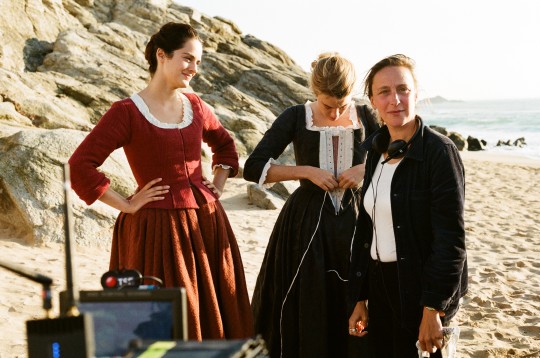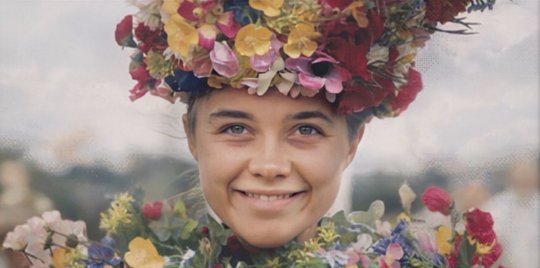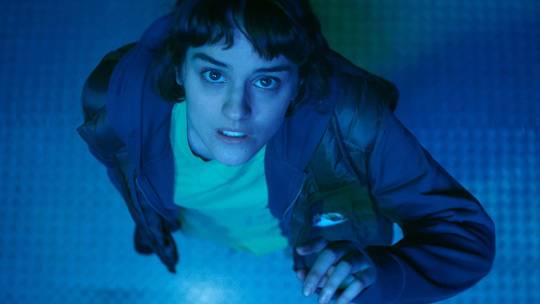#the way it parallels a tale of two stans unintentionally or not
Explore tagged Tumblr posts
Text
⚠️the book of bill spoils, blood⚠️
"Hey, brother, it's Sixer."

#WE ARE SO FUCKING BACK#gravity falls#gravity falls fanart#the book of bill#the book of bill spoilers#stanford pines#bill cipher#literally my favorite section in the whole entire book#the way it parallels a tale of two stans unintentionally or not#the way he wrote down stan's whole name instead of the abbreviation#i just love that section so much it's so fuckign GOOD#wait i have more#the way it is inbetween such scary parts of the books with bill doing whatever the fuck he wants with ford's body omgggg#HE CAN MAKE HIM FORGET HIS OWN NAME THATS SO SCARYYY#and the way bill made ford believe he was going to tell stan that he was dead if the line went through holy shit#ok i'm normal again#he def got nerve damage from the nail#billford#tw blood#i forgot to add his moles life is evil#art
287 notes
·
View notes
Text
Gravity Falls Parallels: Stanley and Stanford Pines


To start off, aside from the similar names, both these characters endured great hardships in the 30 years before the events of the show took place.
Similarities

Both of these characters more or less project their insecurities onto the younger Pines twins, are both insensitive to each others' each interests, and have a lot of pride about themselves as individuals. However, both also care deeply about the younger twins' safety, and are willing to show their more softer sides around them. Furthermore, while both primarily connect more with the younger twin who (on the surface level) identifies with them the most, they also deeply care about the other as well. In A Tale of Two Stans, both also omit important information in their stories, such as Stan, with being homeless and Ford, with his history with Bill. Both are also easily deceived by anyone who pretends to show them the slightest amount of affection or kinship (like Stan with Darlene and Ford with Bill), and finally both were social outcasts when they were younger.
Differences
Stanley
Stan is more emotional than Ford is and is thought to be both and idiot and screw-up by most, including his father. Though he puts on a facade of being emotionally distant, others can see through it very easily. He was also somewhat clingy with his twin brother, believing he couldn't make it without him and still holding onto the idea that they could eventually travel the world together, even after Ford showed interest in a school that valued his intellect. Due to these factors, and showing more concern with his plans for the future rather than thinking about Ford after he unintentionally costs Ford his dream college, Stan is disowned by the whole family for over 10 years, and is left unable to provide for himself, becoming a criminal in the process. However, this (and his history of lying and cheating) led to Stan becoming an excellent scam artist who had to create fake aliases for himself to sell his material to anyone gullible to buy from him. This also helped him not only sell his merchandise under Ford's name when the latter was accidentally pushed into the portal, but also hide Ford's portal and ward off suspicion it and the real Stanford's whereabouts for 30 years, which demonstrates a level of cunning on Stan's part. After seeing how his feud with Ford has endangered the younger Pines twins, he convinces Ford find an alternative way to defeat Bill without giving into the latter's demands, even if to save the kids. Both because he doesn’t trust Bill to keep his word to leave Dipper and Mabel alone and how he knows that giving into Bill's demands could put the whole world at risk, which helps him see things from Ford's perspective as well.

Stanford
Ford is more intellectually gifted than Stan, and was considered the favorite of the Stan twins by his father. In spite of being not being one to act on his emotions, Ford is more open about his than Stan is. Due to this he takes, pride in his accomplishments and immediately jumps on the offer to go to a highly prestigious college, not showing much concern in Stan beginning to feel left behind. He had also come to view his relationship with Stan as suffocating by this point. Because of this, when Stan unintentionally sabotages his science fair experiment (and admitedly shows little concern over this), he accuses Stan of doing so intentionally and doesn't protest to Stan being disowned by the whole family. Both because he was born with an extra finger and his high IQ, Ford began to think of himself as someone with a greater purpose, which in turn led him becoming incredibly arrogant. This is exploited by Bill, who tricks Ford into building a gateway for the former to enter through. Ford is later sucked into said portal after treating Stan like his errand boy who Ford expected to hide his first journal without protest, or considering Stan's feelings. This demonstrates how, much like Bill (although unintentionally) Ford viewed others as tools to further his own agenda. While still problematic in present day, he is becoming more considerate of others' feelings, allowing Stan to stay to tend to Dipper and Mabel, and expressing concern at the revelation that Mabel didn't take his apprenticeship offer to Dipper well. He fully grows willing to take his family into consideration after seeing how his feud with Stan has endangered the younger twins, working with Stan to save them and finally accepting how damaging his idea of being a lone hero is, realizing that Stan has to be the one to sacrifice his memories to put an end to Bill, and not him.

#gravity falls#gf stan#grunkle ford#stan pines#gf ford#grunkle stan#stanford pines#stanley pines#ford pines
110 notes
·
View notes
Photo

Stanning the Ancients.
Valerie Complex probes the intersection of Greco-Roman mythology and queer experience in Portrait of a Lady on Fire, The Neon Demon, Jumbo and Midsommar.
Ancient stories have a way of influencing modern filmmakers—in part because of their “glorious” approach to love, as actor, writer and Greek-myth-lover Stephen Fry noted at this year’s digital Hay Festival. But even beyond depictions of same-sex love, Greco-Roman mythologies lend themselves well to tales of otherness and transformation.
Mythology isn’t just a bunch of stories from thousands of years ago—it’s something we create every day. Greco-Roman mythology, in particular, has less to do with the “godly” part of the pantheon, and more with their human qualities. Their lust, jealousy, wrath and greed: on display for not just other gods but all mortals under them. These stories were a portal for us to reckon with the less-savory parts of ourselves.
More than that, these stories were a cipher; a way for us to relate to one another without the need for conversation. What are celebrities and the gossip they inspire, if not modern myths? Stans are acolytes worshipping at the temples of their respective gods. They make offerings, pray to them, build altars. Every celebrity’s past is of great interest to their worshippers, who mine their back-stories for nuggets of relatability.
Beyond direct adaptations (Jason and the Argonauts, Clash of the Titans and the like), these ancient myths have informed many recent films (Prometheus and The Lighthouse; the Amazons and Wonder Woman; Oedipus and Old Boy; Homer’s The Odyssey and O Brother, Where Art Thou? included). But queer scholars have long seen Greco-Roman myths as having a particular way of helping shape queer cinematic experience, because they exist at the same intersections.
Consider the queer sensibilities in the tall tales that feature trans and intersex characters, and all the other ways the ancient poets encompass LGBTQIA expression: through their tales of otherness, outcasts living on the fringes of society, relationships that reject heteronormativity, or that push the bounds of sexuality and identity.
When myth and movie come together to create loose adaptations, film lovers are blessed with art like The Neon Demon, Jumbo, Midsommar and Portrait of a Lady on Fire. Let’s look at how Ovid, Euripides and Virgil have woven their way into the fabric of each of these stories. (Spoilers ahead!)

Noémie Merlant, Adèle Haenel and writer-director Céline Sciamma on the set of ‘Portrait of a Lady on Fire’ (2019). / Photo by cinematographer Claire Mathon, courtesy of NEON
The Melancholy Experience of Finite Love and the Desire of the Gaze: Céline Sciamma’s Portrait of a Lady on Fire meets Virgil’s ‘Orpheus and Eurydice’
Virgil’s story of Orpheus and Eurydice is woven so literally and metaphorically into Céline Sciamma’s Portrait of a Lady on Fire that it’s interesting to discover how late in the piece it came. Sciamma told me in an interview at the Toronto International Film Festival in 2019 that the story was one of the last elements to be included in the script. When she re-read the myth, she felt it ran perfectly parallel to Marianne and Hëloise’s relationship because the concept of gaze is extremely important for both couples.
In Virgil’s tale, it was prophesied that the marriage of Orpheus and Eurydice would be short-lived—and so it was. Eurydice dies from a snake bite, and her soul is sent to Hades. While in mourning, Orpheus gets the attention of the gods by singing and playing the lyre.
Being the rule-breaker that he is, Orpheus travels to the underworld to bring Eurydice back. Hades and Persephone are moved by his music and grant his wish that he will reunite with his wife, instructing him to keep his eyes front while his wife walks behind him into the living world. Unfortunately, he turns around—and loses her forever. We don’t know why he turned around when he was told not to—did he make the poet’s choice, or the lover’s? Perhaps the memory of Eurydice felt more feasible than having her physically.
In Sciamma’s film, Marianne (the painter), Hëloise (her subject) and Sophie (the maid) are isolated on a small island in eighteenth-century France. The trio carve out a microcosmic community where they are equal peers and status has no power. Hëloise reads the story of Orpheus to her two friends; they discuss whether he makes the poet’s choice, or the lover’s choice. Marianne and Hëloise engage in a romantic relationship, subverting the hostile, patriarchal world they live in. When their time is finally up and Marianne is running to the door to leave, Hëloise requests she turn around to see her one last time, thus imprinting a lasting image in Marianne’s mind. No one dies in their story, but, with a look, their love for one another lasts beyond the physical world.
Watch: Céline Sciamma discusses the myth of Eurydice and Orpheus in this clip from the new Criterion release of Portrait of a Lady on Fire.

Elle Fanning as Jesse in ‘The Neon Demon’ (2016).
Reflections and personae in The Neon Demon: Nicolas Winding Refn takes on Ovid’s ‘Echo and Narcissus’
The harsh modeling world is the perfect backdrop for The Neon Demon, which deals with ideals of beauty, deceit and narcissism. The film is also a loose adaptation of the Roman poet Ovid’s story of Echo and Narcissus from Book III of Metamorphoses. Narcissus is the beautiful hunter who upsets Aphrodite when he rejects a low-level goddess in the most asshole-y way. She curses him, and he ends up drowning when he falls in love with his reflection and tries to kiss it over a pool of water.
In The Neon Demon, Jesse (Elle Fanning) wants to be fashion’s next ‘it’ girl. She has youth and beauty on her side, which invokes jealousy in others. As her star rises, Jesse is consumed by vanity. After her harsh rejection of make-up artist Ruby (Jenna Malone), and going on an egomaniacal tirade, she is pushed into an empty pool by Ruby’s friends Sarah (Abbey Lee Kershaw) and Gigi (Bella Heathcote), thus breaking her neck.
Two stories from different millennia share a common thread: characters who love themselves to death (literally). What separates them is the queer subtext, particularly in The Neon Demon. Does Refn know his film had queer subtext? Perhaps not, though the film itself is often included in modern queer horror lists. There is an explicit attraction between the main characters, and he does an excellent job examining what that looks like when they are clouded by envy. For the women, this desire manifests in the form of companionship (Ruby), status (Gigi) or consumption (Sarah). This queer interpretation aids Refn’s exploration of relationships that exists outside of the typical portrayal of female desire.
There is a debate among viewers regarding the queer subtext and the lesbian body horror aspects of the film. Many of the film’s critics denounced the level of sexual objectification of the young women. However, objectification is a hallmark of the story: it’s a movie about the modeling world. What people miss is not only how the external world oversexualizes these characters, but how they objectify one another, and that gaze lends itself to a strong queer asthetic.

Florence Pugh as Dani in ‘Midsommar’ (2019).
Outcasts and killer cults in Sweden: Euripides’ The Bacchae as told through Ari Aster’s Midsommar
In Greek tragedy The Bacchae, Dionysus tells the citizens of Thebes he is the son of Zeus. No one believes him. He is gaslit to the point of shame. With his reputation in a shambles, the spurned demigod leaves Thebes. He soon returns in disguise with a pack of rabid women who call themselves the Bacchae—they kill King Pentheus and burn Thebes to the ground because they didn’t listen. No-one listens to Midsommar’s main character, Dani, either.
Dani is in an emotionally abusive relationship with the gaslighting Christian, and is surrounded by Christian’s friends who reject her and see her as an emotional burden. Imagine how unhappy they are when Dani accompanies them on their trip to Sweden to visit the commune of the Harga people for their Midsummer celebration. Things spiral out of control when Dani unintentionally rises to godlike status within the Harga cult, which leads to, let’s just say, consequences for her dissenters.
On its surface, Midsommar is not queer cinema—at the center of the film is a heterosexual couple. However, Dani is an emotional outcast and feels like an outsider no matter where she is; it’s an echo of queer experience that is heightened when the women of the Harga embrace Dani. She gains status within the group and receives cathartic support from the young women of the commune. This allows her to purge the toxicity she’s experienced at the hands of Christian, his friends, and the outside world.
Sure, the Bacchae and the Harga are both dangerous, insular, microcosmic communities. Those attributes aside, these are two groups that exist separate from society at large, because their way of life is unique only to them.

Noémie Merlant gazes up at the object of her desire in ‘Jumbo’ (2020).
The Allure of Inanimate Objects: Zoé Wittock’s Jumbo vs Ovid’s ‘Pygmalion’
Another story from Ovid’s Metamorphoses features Cypriot sculptor Pygmalion, who swore off women in his city and took to isolation. In his time away from society, he carved a woman out of ivory and fell in love with it. He prayed to Aphrodite to bring the sculpture to life—and she did! Could this be an early case of objectum sexuality? While there is no divine intervention in Jumbo (which premiered at Sundance this year), Zoé Wittock’s film explores the meaning of objectum sexuality, which is a form of sexual or romantic attraction focused on particular inanimate objects.
In the film, Jeanne (Noémie Merlant—yes, Portrait of a Lady on Fire’s Marianne) isn’t interested in human interaction, other than with her mother Margarette (Emmanuelle Bercot). Working for the cleaning crew at an amusement park, she falls in love with the newest attraction, a tilt-a-whirl ride named Jumbo. As Jeanne’s desire grows, the ride comes to life and begins to communicate via colors and sounds.
Jeanne is a societal outcast who rejects human romance; her relationship with Jumbo subverts what society understands about sexuality and connection. Coming out to her mother about her attraction is also a challenge. Margarette isn’t open to what her daughter is feeling and reacts harshly toward Jeanne by coercing her into engaging in sex with men, and, when that doesn’t work, throwing her out of the house.
Eventually, Margarette realizes love is love, and as long as her daughter isn’t hurting anyone, she can learn to accept Jeanne’s love for Jumbo. Being pushed to the fringes of society for being honest (like Jeanne), or isolating yourself (like Pygmalion), is a scenario that queer folks are all too familiar with. At least Jeanne and Pygmalion don’t face tragic ends. The odds of being rejected by loved ones is high.
Coming out to family members is hard enough, especially when your very existence challenges their sense of normalcy. But this is why chosen families are important, and in both stories, the love of an accepting, chosen few is better than the approval of the majority.
Related content
Follow Valerie on Letterboxd
Valerie interviews “Celine the Machine” at the Angelika in New York earlier this year.
Portrait of a Lady on Fire director Celine Sciamma answers your questions in our Letterboxd Q&A.
Jumbo and Portrait of a Lady on Fire star Noémie Merlant answers our Life in Film questions.
Midsommar director Ari Aster talks pagan rituals and psychedelic drugs in a Letterboxd Q&A.
MundoF’s essential list Opening the Vault: A Chronological History of Queer Interest & LGBTQ+ Cinema.
The Top 100 Narrative Feature Films by Women Directors
The Top 100 Women Directors of the 2010s
The 2010s—Top Romance Films
#valerie complex#queer cinema#lgbtqia#lgbtqia cinema#the neon demon#portrait of a lady on fire#midsommar#jumbo#noemie merlant#celine sciamma#nicolas winding refn#ari aster#zoe wittock#sundance#cannes#greek myth memes#greek mythology#greco-roman#roman myth#roman mythology#orpheus#euridyce#narcissus#ovid
16 notes
·
View notes